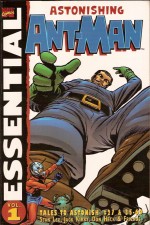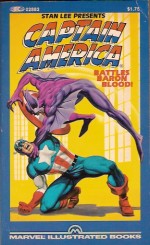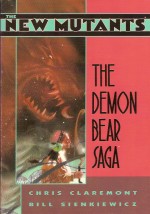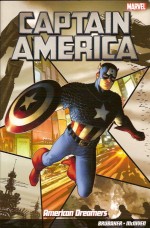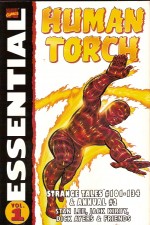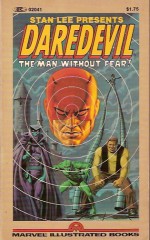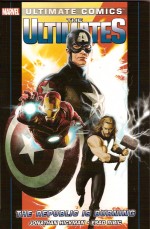
By Jonathan Hickman, Esad Ribic, Brandon Peterson & various (Marvel/Panini UK)
ISBN: 978-1-84653-504-8
Marvel’s Ultimates imprint began in 2000 with a new post-modern take on major characters and concepts to bring them into line with the tastes of 21st century readers – apparently a wholly different market from those baby-boomers and their descendents content to stick with the precepts sprung from founding talents Jack Kirby, Steve Ditko and Stan Lee… or simply those unable or unwilling to deal with the five decades (seven if you include the Golden Age Timely tales retroactively co-opted into the mix) of continuity baggage which saturated the originals.
Eventually even this darkly nihilistic new universe became as continuity-constricted as its ancestor and in 2008 the cleansing event “Ultimatum†culminated in a reign of terror which excised dozens of super-humans and millions of lesser mortals in a devastating tsunami which inundated Manhattan courtesy of mutant menace Magneto.
In the aftermath the meta-human survivors struggled to restore order to a dangerous new world…
This compilation collects Ultimate Comics: The Ultimates issue #1-6 and Ultimate Comics: Fallout #4 (published in comicbook form from October 2011 to March 2012) which comprised the core-story for the latest relaunch of the constantly-changing grim and gritty alternate universe.
Before the Deluge, S.H.I.E.L.D. director Nick Fury ran an American Black Ops team of super-humans called the Avengers, but he was toppled from his position for blatant rule-bending – and being caught.
Now in the wake of the global inundation, internecine strife amongst the covert ops community and brushfire wars which have broken out all over the planet, Fury is back: once more running the entire spook show and firmly re-established in charge of S.H.I.E.L.D.’s army of secret agents, an official superhero team for public consumption and another clandestine super-squad doing stuff the officially sanctioned Ultimates wouldn’t dream of…
It isn’t a job many would want: the world is falling apart at a phenomenal rate. Individual metahumans are classed as Weapons of Mass Destruction and personal superpowers are now the focus of a terrifying new global arms race. In Asia the new nation SEAR (South East Asian Republic) is dissolving into bloody civil war after developing a serum that will randomly spark fantastic abilities in humans dosed with it. They also stacked the deck by simultaneously releasing a global virus which has killed the genes responsible for causing natural mutation.
A new metahuman nation has grown up within the embattled country offering super-powers to anybody daring to take the Serum, as seen in sidebar series Ultimate Comics Hawkeye…
The gods of Asgard have been dragged from their heavenly halls and marooned on Earth where their wild warlike ways and fantastic powers are disrupting all of Europe. Premiere hero Spider-Man has been murdered, resurrected WWII super soldier Captain America has gone AWOL and in the wings an old friend turned foe has returned to remake the planet according to an impossible and remorseless agenda…
The constant calamity begins when enigmatic mastermind Maker and his dedicated band of volunteers entomb themselves in a high-tech dome in Northern Germany where enhanced time and ruthless scientific augmentation enables the inhabitants to hyper-evolve a thousand years in the space of a few days.
Whilst Iron Man Tony Stark is being conned by his fellow members of billionaires fraternity The Kratos Club and tricked into detonating a nuke over Montevideo in order to manipulate global stock markets, these Children of Tomorrow – now more alien ant farm than human science cult – break out as the Dome begins to expand and absorb Western Europe. The region’s superhumans, including current Captain Britain Jamie Braddock are busy losing a fight with the errant Asgardians and card-carrying Ultimate Thor when The Children attack…
As Hawkeye attempts to forestall the civil war in SEAR and Stark is dragged back from death by his bodyguard Jarvis, the Children perform the impossible feat of killing almost every god in Asgard.
Only Thor and Braddock survive but the Thunderer’s hammer and magic are gone forever…
Resorting to technology provided by Stark and S.H.I.E.L.D. the Last Asgardian returns to the fray, intending to die gloriously in battle as a warrior should, but the expanding dome and ravening children are unstoppable. After an all-out final assault by S.H.I.E.L.D. and the World’s armies, humanity is utterly defeated and humiliatingly allowed to slink off to await the end…
When the Dome stops growing and stands revealed as an incredible future City the doom-hungry Thor invades it, freeing Braddock, who has been imprisoned and subjected to torturous scientific investigation. They are then captured by the Maker who reveals his impossible true identity, after which he discards the ineffectual and demoralised warriors.
Thor doesn’t care: he has just realised that he is being haunted by the ghosts of all the fallen Asgardians…
Fury is almost out of ideas. When technologist Sam Wilson AKA the Falcon finds a way to infiltrate the City he suddenly vanishes without trace, and even Captain America has refused to rejoin the Ultimates and lead mankind’s last hurrah against their implacable unshakable successors…
To Be Continued…
Hot off the presses this saga ends on a chilling cliffhanger as what might well be the Last Battle of the alternate Marvel Universe begins. However the always entertaining Jonathan Hickman, artists Esad Ribic & Brandon Peterson (as well as colourists Dean White, Jose Villsrrubia, Jim Charalampidis, John Raunch & Edgar Delgado) make this a slick and compulsive read for older Fights ‘n’ Tights fans and the impressive cover gallery by Kaare Andrews, Ribic & Chris Evans adds immeasurably to the book’s visual appeal.
Much more in tune with the visual feel and sensibilities of the assorted Movie franchises than the traditional comicbook market, the trademark post-modernity and cynical, dark action is amped to the max here; delivering the visceral shocks and staggering revelations fans of this sub-imprint seem addicted to.
Whilst perhaps not the best book for anybody thinking on jumping on to the decidedly different Ultimate World, The Republic is Burning will certainly strike a chord with older readers who love the darkest side of superheroes and readers who know the company’s films better than their publications.
A British edition licensed and published by Panini UK, Ltd. ™ & © 2012 Marvel Entertainment LLC and its subsidiaries. Licensed from Marvel Characters B.V. All Rights Reserved.

